Outdated systems often drain budgets and hold back business growth. Our guide explains what legacy system modernization truly means and how to upgrade yours without disruptions.
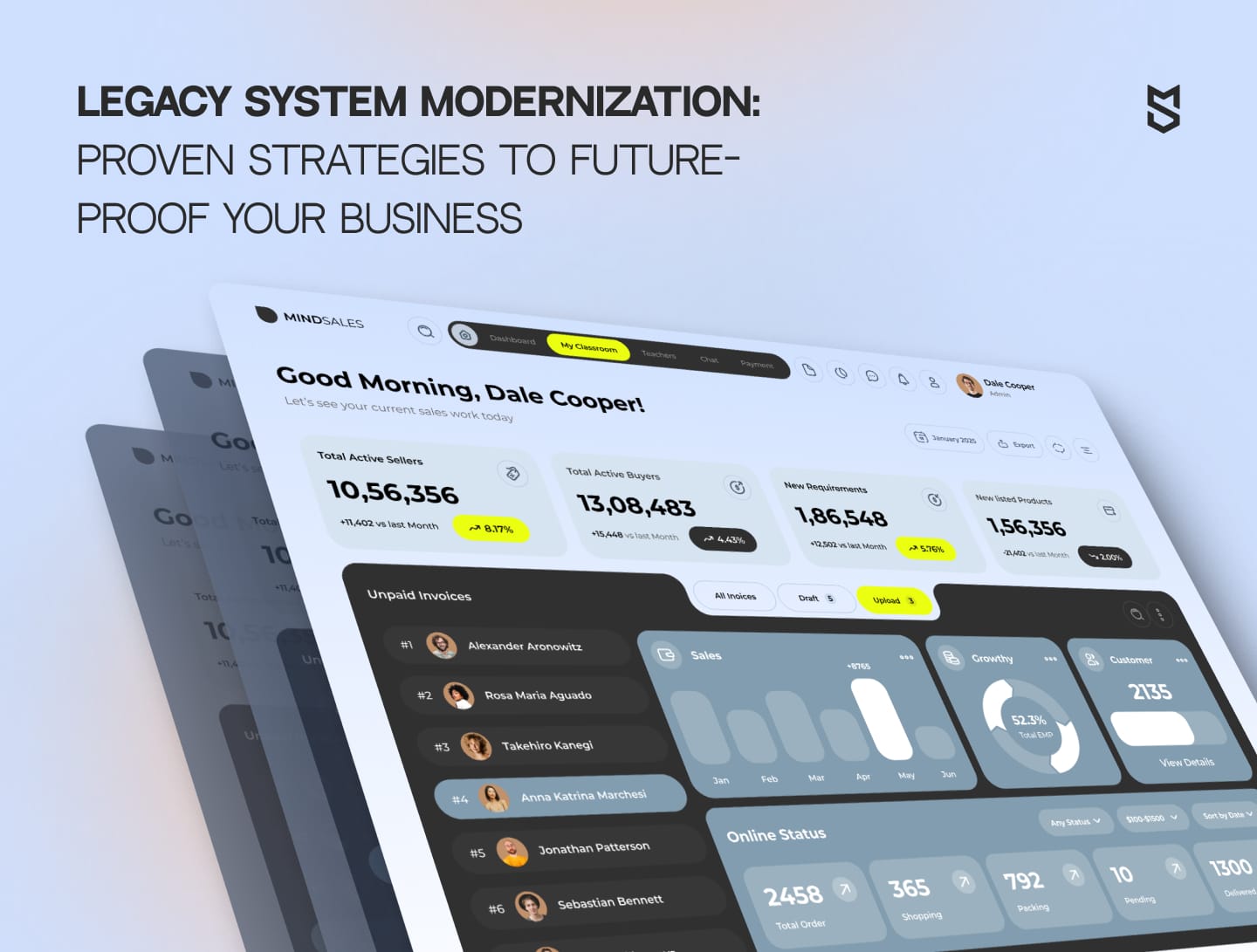
Highlights:
- It’s often legacy systems that consume 60–80% of your business IT budget on maintenance.
- Outdated enterprise software creates security vulnerabilities, which can result in data breaches and security violations.
- From our experience, 55% of failed attempts at legacy application modernization happen due to lack of proper planning.
Outdated legacy systems can silently erode your business from within due to limited integrations, high maintenance costs, frustrating user experience, poor scalability, and mounting security risks. All this drains your resources, slows down innovation, and gives other companies a competitive advantage over you.
What’s even worse, while compliance requirements and digital expectations continue to rise, the risks of falling behind grow faster.
At Mind Studios, we’ve helping businesses like yours to tackle these issues head-on by developing a practical software re-engineering roadmap fully tailored to clients’ goals, users, and systems.
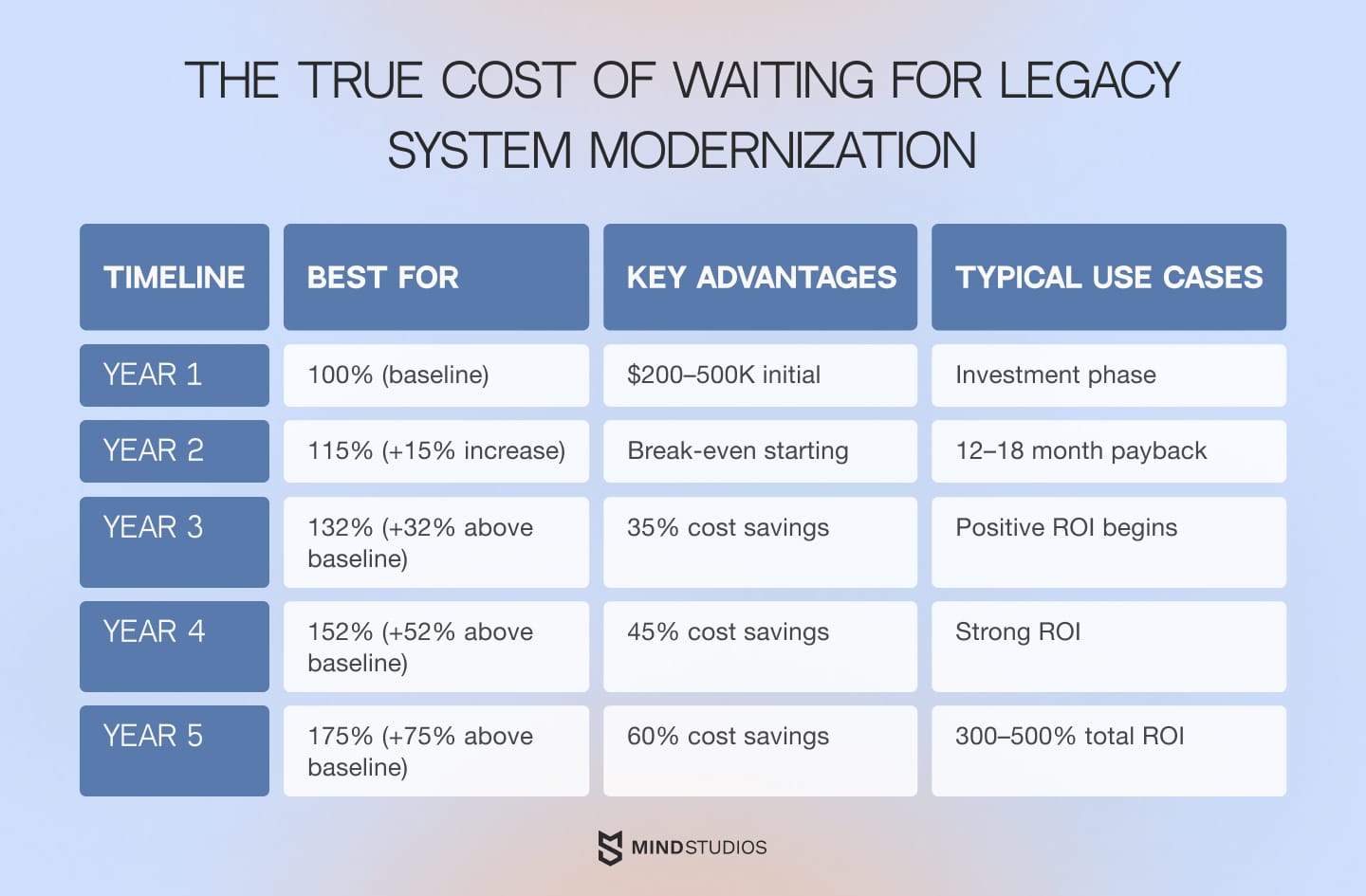
Are you ready to reduce risk, cut costs, and conduct legacy tech transformation with confidence? Contact us to build a step-by-step legacy modernization strategy.
What is a legacy system, and what does its modernization involve?
Before diving into tech details, let’s clarify what we mean by a legacy system.
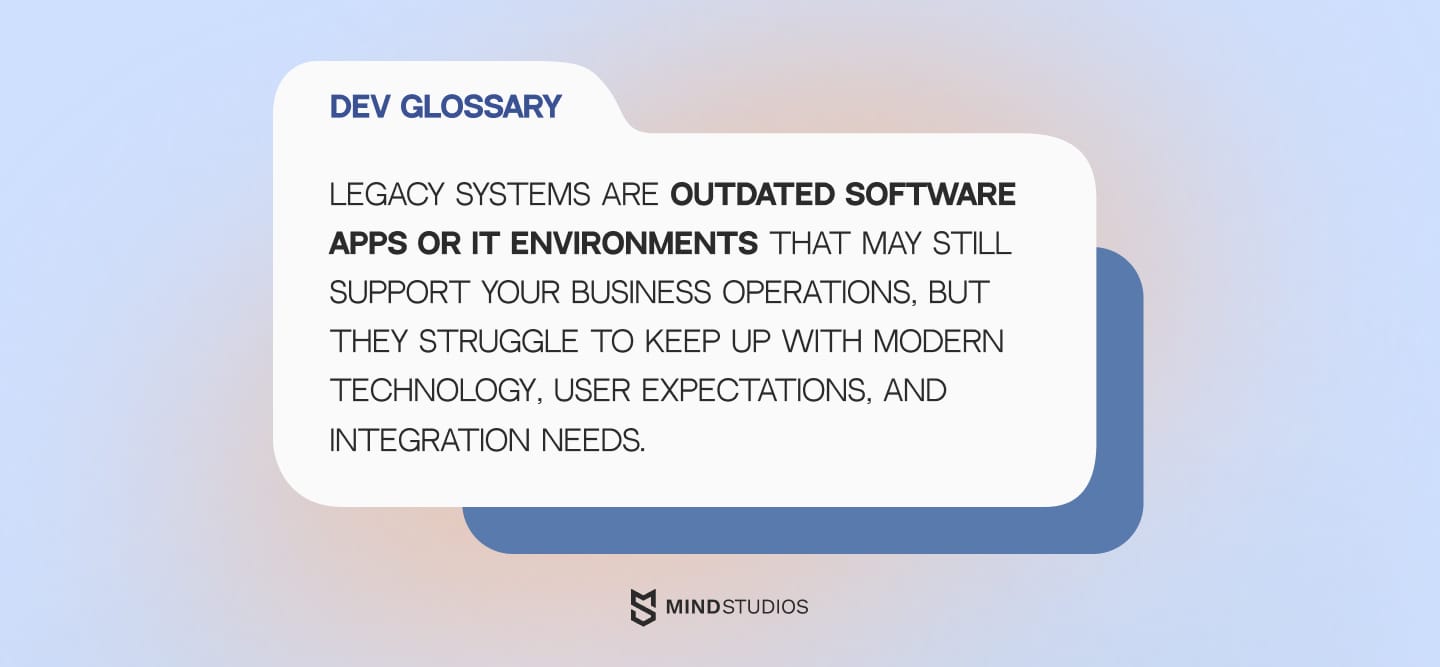
Legacy system modernization, in turn, is all about aligning your tech with your business goals while minimizing risks and unlocking long-term value.
There are multiple ways to transform legacy systems, from just light upgrades to full rebuilds, depending on your timelines, business needs, and budget.
Here are the five best practices for legacy system modernization:
Modernization strategy |
Description |
When to adopt |
Benefits |
|---|---|---|---|
Replatforming |
Transition to a modern platform without changing the core logic. |
When your tech stack is outdated but business logic still works. |
|
Refactoring |
Rewriting only specific modules to avoid inefficiencies. |
For systems with performance issues or “spaghetti” code. |
|
Rearchitectoring |
Opting for microservices for legacy apps. |
For systems needing faster updates/scalability. |
|
Replacement |
Building a completely new system from scratch. |
When your systems can’t be salvaged. |
|
Encapsulation |
Wrapping your systems with APIs to enable integration. |
When you need fast legacy system integration. |
|
Today, legacy system modernization is a flexible process, meaning you don’t need to choose an all-or-nothing replacement. Instead, you can opt for a risk-aware modernization strategy that allows for a gradual transformation of your core tech stack while maintaining your operational continuity.
Mind Studios recommendation: Consider API-driven modernization as your first step. This way, you can instantly improve integration capabilities while planning larger architecture changes after creating modern interfaces for your existing systems. This is a quick-win approach that will allow you to build stakeholder confidence for further, more comprehensive legacy software modernizations.
How do you know it’s time for legacy system modernization?
By replacing legacy software too late, you may face system failures, customer churn, and even security breaches. However, modernizing legacy systems too early (or without a clear, secure cloud migration plan) can waste both your time and money.
Most businesses start noticing they need legacy system modernization when those systems have already started blocking their business growth. For example, we recently helped a healthcare provider whose patient management system required 45 minutes to retrieve basic medical records. So, basically, doctors were waiting while their systems were processing queries and this affected the business quite negatively. Once we modernized their system, the process of retrieving the data started taking less than a minute.
— explains Dmytro Dobrytskyi, CEO at Mind Studios.
So, how do you know it’s about time to modernize your systems?
If any of these warning signs sound familiar, it’s time to act.
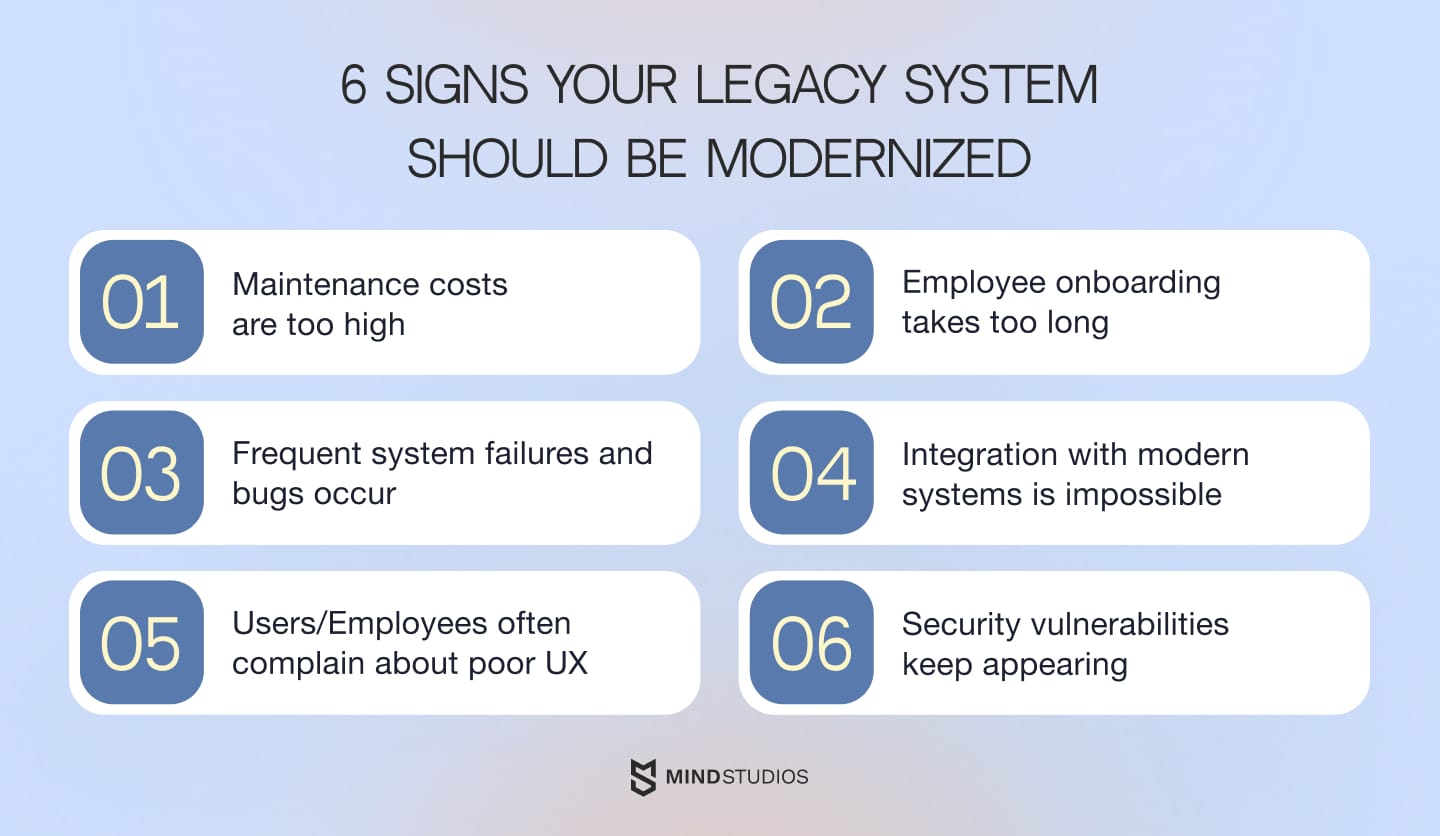
Sign #1: High maintenance cost
When your IT department spends more time on fixing problems than building new capabilities, most likely, you are experiencing the classic maintenance cost spiral. Most often, the cost of legacy software maintenance includes not just direct support costs, but also reducing technical debt required to keep systems stable.
Sign #2: Slow onboarding
Your new hires should be productive within days, not weeks. If your new or existing team members need extensive training on unintuitive interfaces, or simple tasks require multiple system workarounds, your legacy systems are long overdue.
Sign #3: Frequent bugs and breakdowns
Typically, an average software developer spends 13.5 hours a week (which is a third of their time!) addressing tech debt. If that’s your case, and your development team constantly firefights instead of innovating, and system instability costs you more than maintenance, it’s killing both productivity and morale.
Sign #4: No integration capabilities
Modern businesses require data accessibility in modern systems. This means if your current systems can't communicate with new tools, analytics software, or your CRMs, you are probably operating in technological silos that limit your growth as well as decision-making.
Sign #5: UX complaints from staff/customers
Poor UX improvements for enterprise tools directly affect customer experience and employee satisfaction. If they both constantly struggle with slow and confusing interfaces, talent retention becomes challenging, and productivity suffers.
Sign #6: Security concerns or unsupported tech
Outdated legacy systems are usually more susceptible to security vulnerabilities, making you an attractive target for cyberattacks. Plus, when vendors stop providing security patches or your systems can’t support modern cybersecurity protocols anymore, you are exposing your business to compliance issues in legacy systems.
Any system needs a legacy modernization strategy at some point, as modern technology advances are rapid, and with them changes in requirements. However, there's a huge difference between addressing these challenges proactively or just waiting for a critical failure to force your hand. Which one will you be?
Ready to evaluate your legacy systems risks? Book a free consultation with our tech experts to identify critical vulnerabilities and your modernization priorities.
What are the business benefits of legacy system modernization?
For most companies, modernizing legacy systems delivers measurable benefits that go beyond IT improvements, it becomes a business enabler. If you treat it strategically, you will be able to see outcomes such as reduced costs, faster innovation, and better products.
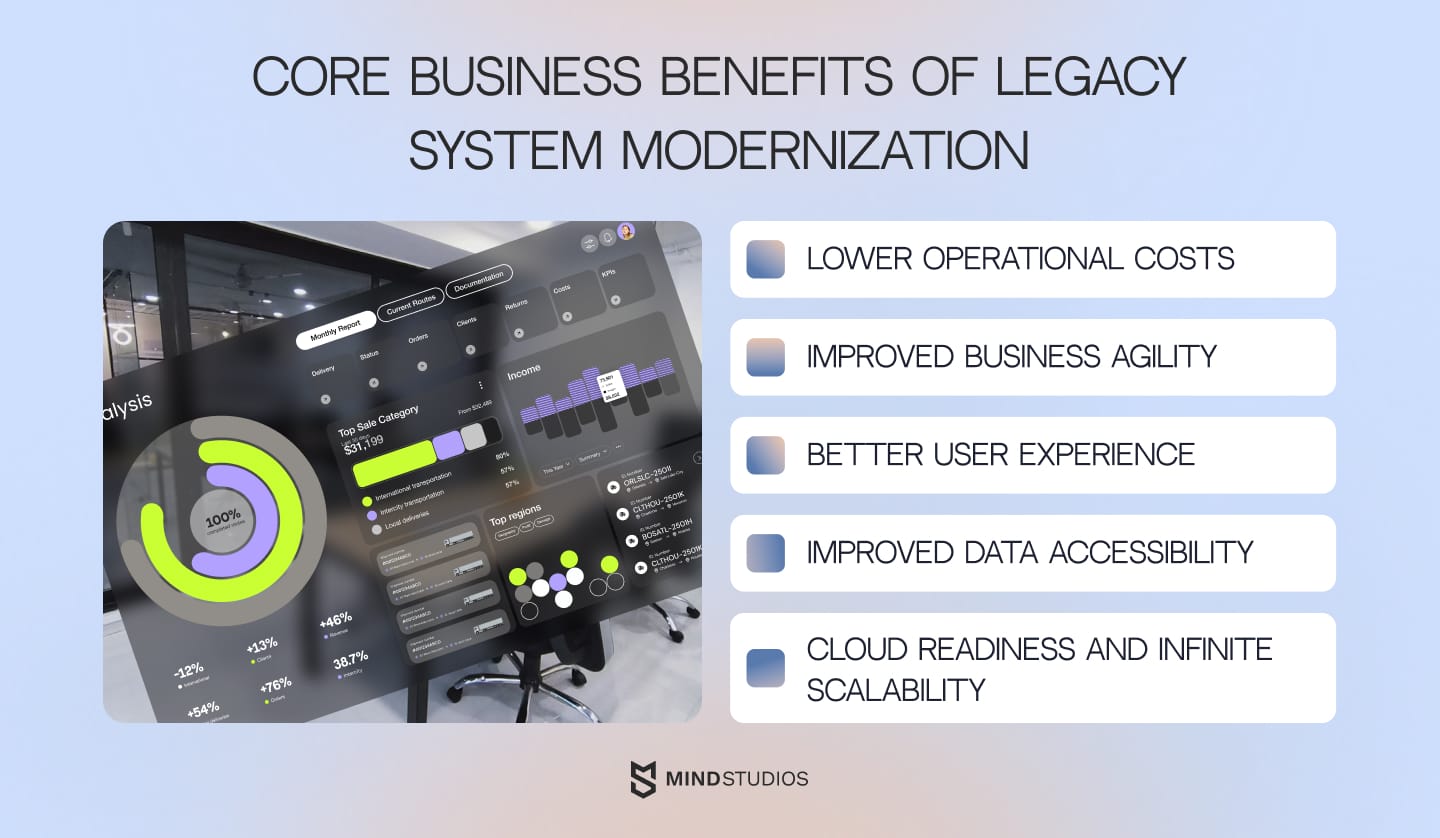
Here are the core benefits you will get:
Lower operational costs through automation
Outdated systems require constant workarounds, patching, as well as manual processes. From our experience, businesses typically see 15–30% reductions in operational expenses within just the first year.
For example, one of our healthcare clients was able to reduce their annual maintenance cost from $850,000 to $360,000 by simply moving from their on-premises servers to a modernized cloud architecture that allowed for automated monitoring and scaling.
Enhanced business agility for rapid feature deployment
Business agility through IT upgrades means being able to respond to market changes in weeks instead of months. The scalable architecture of the modern software allows for rapid deployment of new features, integration with various emerging technologies, as well as fast adaptation to changing customer demands.
Mind Studios insight: Traditional, outdated legacy systems require extensive testing and complex deployment even for tiniest changes. In contrast, modern systems can deploy updates even multiple times a day(!) with automated testing and rollback capabilities.
Superior UX driving customer retention
Modern systems come with intuitive interfaces that reduce training time, improve task completion rates, and minimize errors. All this, in turn, translates into reduced turnover, higher employee satisfaction, and better customer service.
Improved data accessibility and compliance
What we can say for sure, based on our experience, is that legacy systems oftentimes trap valuable data into isolated silos while modern systems provide real-time data. This enables data-driven decision-making and comprehensive business intelligence.
To prove this point, we’ve recently helped a retail chain unlock around $2 million in annual revenue just by bringing together their inventory, customer data, and sales systems. Before, their systems (point-of-sale, CRM, and warehouse management ones) worked independently, which resulted in stock decisions being made using week-old data while customer preferences remained invisible to inventory managers.
After system migration without downtime, the real-time data integration enabled dynamic pricing based on demand patterns, reduced stock, and increased customer satisfaction score thanks to personalized product recommendations.
Cloud readiness and infinite scalability
Legacy to cloud transition enables automatic scaling during peak demand periods without extra infrastructure investment. This means your business can easily handle growth spurts, unexpected traffic, or seasonal variations without system degradation.
Bottom line: In most cases, the benefits of legacy system modernization compound over time and improved systems create better innovation and drive business growth. This justifies further tech investments.
How to modernize without disruptions
Probably one of the biggest challenges of legacy system modernization for our clients is fear of downtime.
However, after working with numerous clients, we can say with 100% certainty that modernization doesn’t have to mean shutting everything down. If you employ a phased and low-risk approach, you can upgrade your systems gradually while all your operations continue as usual.
At Mind Studios, we always follow this 3-step approach for modernization without disruption while aligning each step with real business needs and priorities.
Step #1: Audit and assessment
We always start with a full system audit that helps evaluate tech debt, performance issues, user needs as well as integration gaps. During this stage, we also identify compliance risks and outdated components.
Overall, the tech assessment includes:
- Performance analysis. It measures current system bottlenecks and failure points.
- Security vulnerabilities assessment. Allows to identify instant risks and compliance gaps.
- Integration mapping. Documents how exactly systems communicate and share data.
- Business impact analysis. Prioritizes systems based on their operational effectiveness.
Step #2: Pilot the modernization
Instead of replacing everything at once, we focus on high-impact modules and features. Such steps to modernize legacy applications allow us to prove the modernization concept as well as build organizational confidence and expertise.
The Mind Studios team helps our clients choose pilot projects that:
- Demonstrate clear and measurable improvements;
- Provide learning opportunities for bigger initiatives;
- Have manageable scope and complexity;
- Deliver quick wins that will build stakeholder support.
Step #3: Gradual migration/rebuild
The final step of modernizing legacy systems involves systematical replacement of legacy software while maintaining full operational continuity. This means parallel processing so that old and new systems work simultaneously during transition periods.
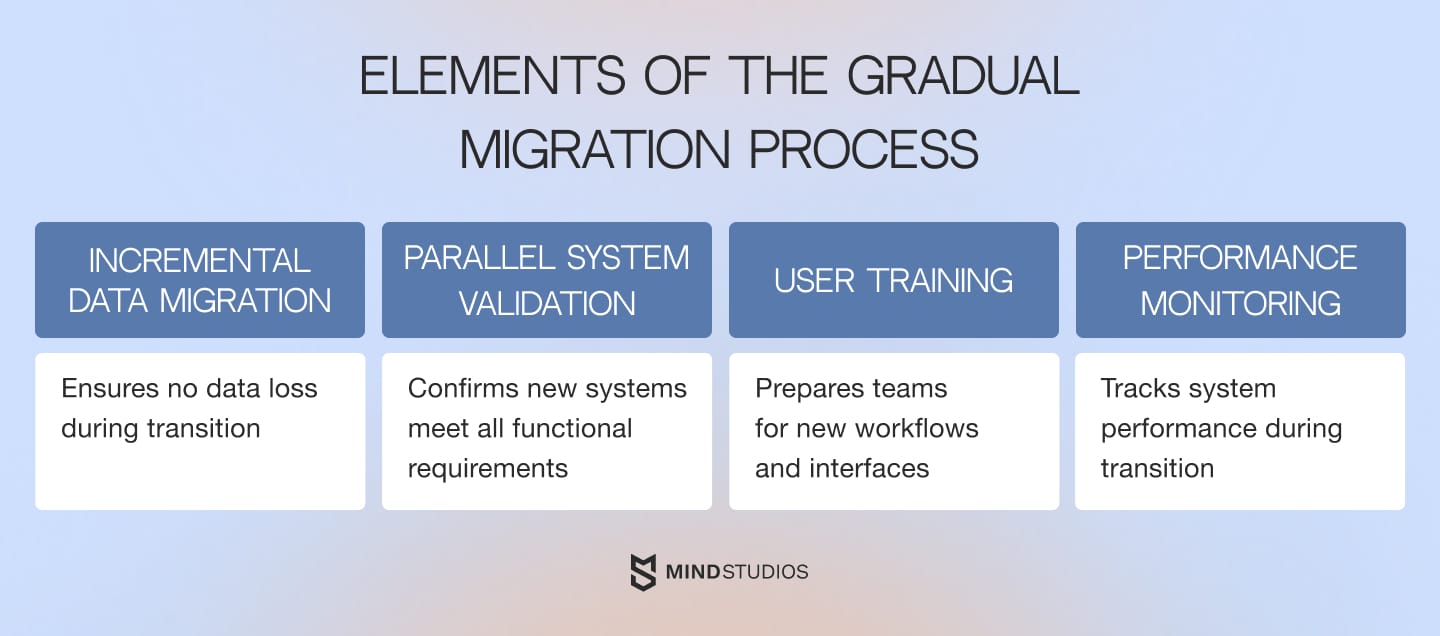
Need help with building your phased modernization strategy? Mind Studios is here to help you, just contact our experts.
Wrapping up
Legacy system modernization isn’t an optional step anymore. It’s a critical step to stay secure, competitive in 2025, as well as adaptive in a modern business environment. Its benefits are pretty clear: lowered costs, boosted agility, much clearer UX, and real-time data.
However, here is the key: modernization doesn’t mean to start anew. With the right team, tools, and modernization strategy, you can easily upgrade what matters most first while avoiding costly downtime.
Mind Studios has guided hundreds of businesses through successful legacy system modernization, delivering measurable improvements in security posture, operational effectiveness, and business agility.
Ready to turn your legacy challenges into opportunities? Let’s build your modernization strategy together and transform your tech infrastructure into your competitive advantage.


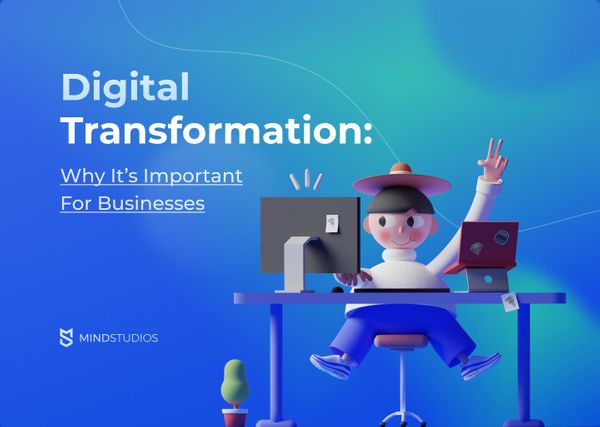
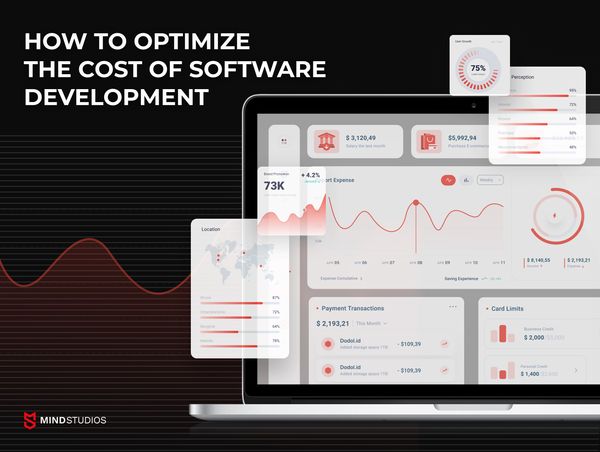
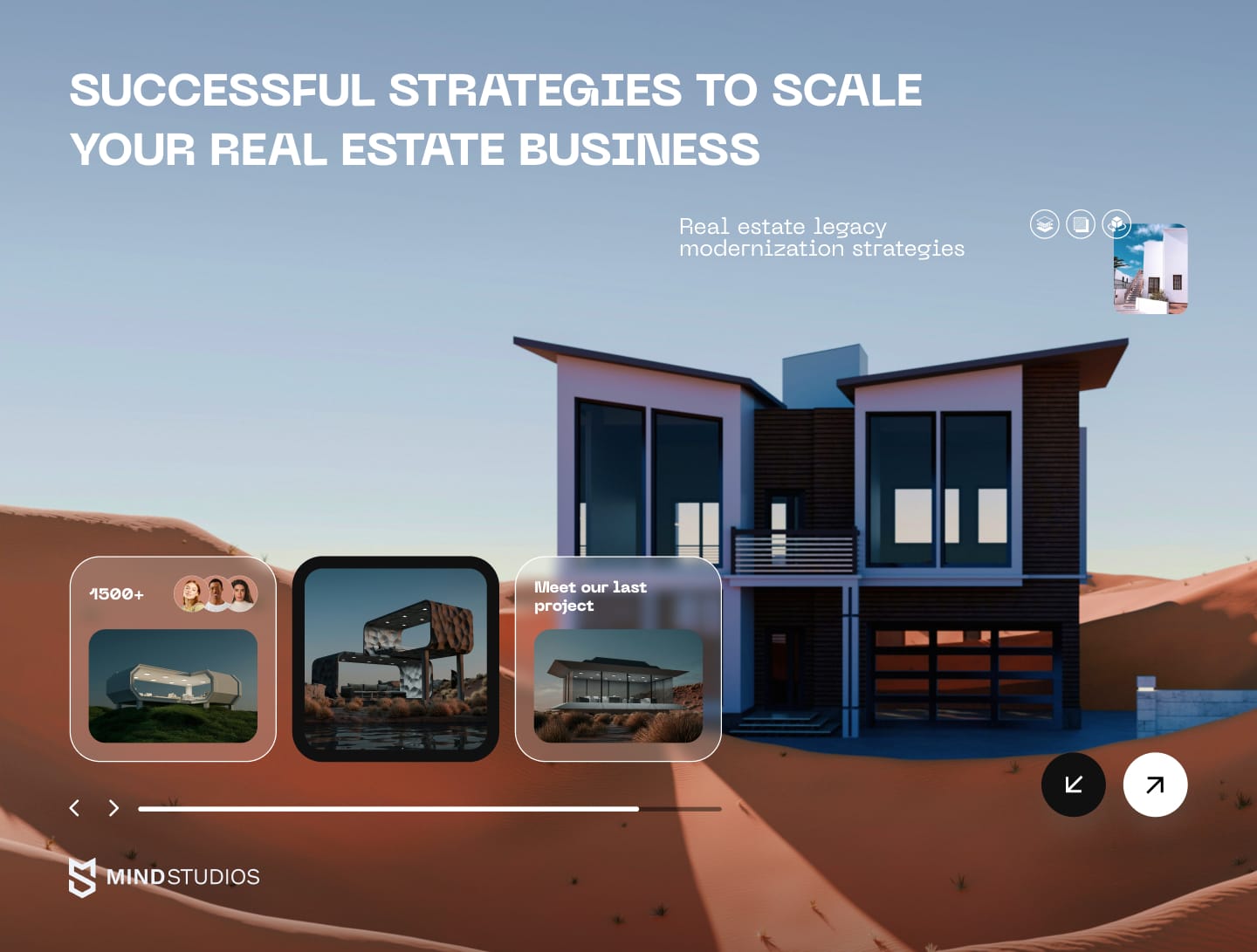
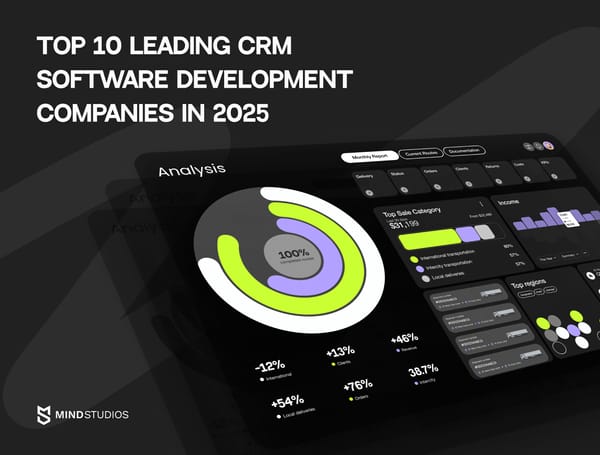


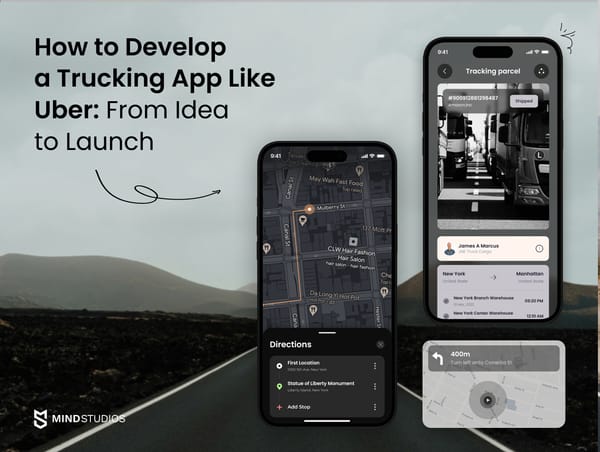
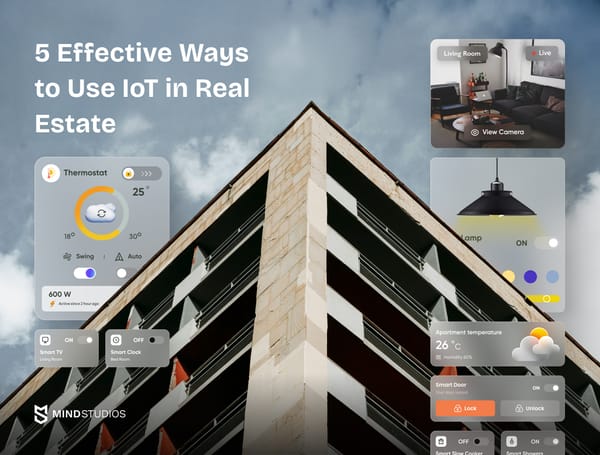
![How to Create an On-Demand Medicine Delivery App [Expert Guide]](https://themindstudios.com/blog/content/images/size/w600/2025/03/IMG-1-Cover-6.jpg)

